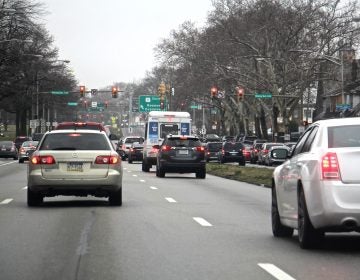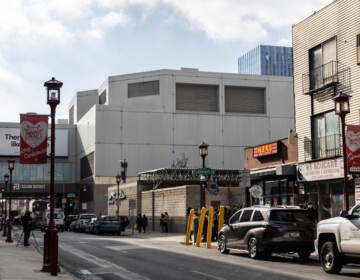2016 Rewind: Cheers and Jeers

Before 2016 is totally in the rearview mirror, it’s time to hand out darts and laurels, my annual list of cheers and jeers. Cheers go to all of you, dear readers. Jeers go to really almost everything else. I’d leave it at that, but 2016 was much more complicated than that for Philly urbanism. Here’s a selection of thngs we should be toasting and roasting as the calendar turns. What’s on your lists?
CHEERS
Most improved City Department: L&I
Helmed by Dave Perri, the Department of Licenses & Inspections has come a long way this year. While recent years saw L&I in disarray, opaque and defensive, there’s a new agenda to make the agency more responsive and transparent. On Perri’s watch the department has made communication a priority, released new and improved public data tools, and advanced a more data-driven approach to identifying vacant and dangerous properties. It’s not perfect but here’s to what feels like earnest efforts at reform and improved service at L&I.
City Defenders: Art Commission rejects billboard blight
Philly seems to have a boundless ability to shoot itself in the foot. Even as the city invests in making great public spaces, it is seeking ways to use public buildings as backdrops for billboards. The idea is to raise revenue without taxation, but it’s among the most self-defeating moves the city could make. Kudos then to the Philadelphia Art Commission for rejecting the first proposal to put billboards on the Municipal Services Building. If there is a quicker way to mar the city’s public realm, I’m not sure I know it. Art Commissioners were right not to cave to the city’s push to cheapen our municipal buildings.
Proof is truth: Tracking traffic fatalities
Let’s be clear: This is a cheer for tracking and data, not for fatalities. The Bicycle Coalition has started mapping crash hotspots and tracking fatalities as part of a larger campaign to build support for Vision Zero, the goal of eliminating traffic fatalities and serious injuries by making streets safer for all users. If policymakers and the public are going to take seriously a commitment to Vision Zero, data has to rule the day. By showing councilmembers danger zones in their districts and treating traffic injury and deaths in public health terms, the hard conversations about changing street designs, adapting enforcement strategies, and shifting public behavior have more weight.
Long time coming: Rail Park construction begins
Sometimes projects take so long to launch that it is especially remarkable when ground officially breaks. Such is the case with Phase One of the Rail Park, the sprouting of a seed of an idea planted in the early 2000s. It is small, expensive, and a hugely important project. It demonstrates that citizen dreams can sometimes catch fire and become reality. It is also a huge opportunity for Philadelphia to show some serious public space ambition and creativity as cities across the nation watch our work building stronger civic commons. After years of fundraising, public officials and Friends of the Rail Park celebrated a ceremonial groundbreaking in October. Here’s to a first step and more phases to come.
Decked out: Swim Philly
After a successful test run at Francisville Rec last summer, the Pop-Up Pool Project was adopted by the city and adapted into Swim Philly. It was the little placemaking pebble that caused ripples at rec centers this year. It’s encouraging to see a Knight Cities Challenge funded project get tested and open the city’s eyes to new possibilities about existing public assets. The city was willing to reconsider its stances on movable pool furniture as a liability, and in so doing, opened up a world of possible upgrades for public pools. This is the sort of small-scale experimentation that can lead to important ideas about how to evolve rec centers without breaking the bank. From small things, big change is possible.
Power Saver: Delaware Generating Station designated historic
For years the PECO plant next to Fishtown’s Penn Treaty Park has been largely unused and decaying, but a plan from Cescaphe Event Group and Bart Blatstein to turn it into an event venue and micro hotel is advancing. Neighbors wanted to make sure the power plant would be protected as it changes, and advanced a local historic nomination. Instead of an adversarial designation hearing, the response from the development team was constructive – even offering ways to improve the nomination. The power plant may not be getting a public enough use under an event-oriented vision but it will hopefully be given new life. That the development team sees value in the power plant’s history is heartening. And local designation brings to the end questions about unchecked potential partial demolitions or insensitive alteration to the proud John Windrim building without a layer of review.
JEERS
Fooled: Developers sucker city
Tough love time: Developers are having their way with you, Philly. You’ve looked reactive, unprepared, and gullible at times.
Earlier this year PMC’s attempted fast-one at One Water Street – to renege on a commitment to include below-market-rate units in the building, which enabled PMC to build taller – was an important test. And for a minute there the city was caught off guard, realizing it didn’t have any real power to hold developers to promises made in exchange for zoning bonuses. Ultimately the city’s strong response – threatening not to issue a Certificate of Occupancy (essentially the only stick available) was the right move and getting PMC to pay into the Housing Trust Fund was a good solution. That said, it was a close call leading to the city’s realization that it needs to do more to compel developers to keep up their end of zoning bonuses.
In the case of Jewelers’ Row, the Kenney administration sounded like it thought conversation with Toll Brothers meant the developers would take historic fabric and scale into account. As soon as Kenney realized Toll had no intention of keeping that commitment, he retorted in strong language saying that would send “a clear message that they no longer wish to have a productive relationship with the City of Philadelphia.”
As the city’s development climate continues to simmer, it’s up to Philly to get its ducks in a row – there’s no excuse for being surprised by either of these conflicts. The city effectively set the conditions making each situation possible and it’s time for corrective action. First and foremost: Catch up with zoning remapping, and amend codes to give the city more enforcement tools when it grants bonuses of any kind for starters.
No BID: Property owners vote in favor of a trashy 9th Street Market
Property owners in a would-be 9th Street Business Improvement District around the Italian Market voted down the proposed BID by a slim margin. Here’s why it’s troubling: The market needs a lifeline and more than a little unity. Longtime businesses are losing elders. Say what you will about authenticity, which the market has in spades, but it’s got a trash problem. It makes sense to pool resources to support the corridor’s upkeep and appearance, and that could help everyone involved. Not everyone agrees – a point summed up tidily in the words of one business owner we talked to who balked at the BID proposal: “Garbage used to pile up to my awning. That’s when business was best.” Apparently enough property owners think a dirty market environment is good for businesses. Barrels of burning trash adds an air of grit, but clean sells too.
Creep: Sexual harassment at PPA
As our President-elect was embroiled in controversy due to remarks caught on tape crowing about being able to grab women in wholly inappropriate ways, the Philadelphia Parking Authority (PPA) had its own sexual harassment scandal. The Inquirer reported that two women had made complaints about PPA director Vince Fenerty’s behavior and ultimately he was asked to leave.
One senior director accused Fenerty of unwanted, inappropriate sexual advances and contact during work hours and work-related events. In an earlier case a PPA employee accused Fenerty of licking her ear, and pulling down her blouse to reveal her cleavage, and making lewd comments. The PPA board tried initially to protect Fenerty.
Fenerty gets a big pension and now he’s got the nerve to ask for a payout for unused benefits. It’s odious and unacceptable in every way. And there is seemingly no amount of sensitivity training that is enough in this world.
MIA: Appointments, priorities
There are more than a few important positions that the Kenney administration has neglected to fill. Who is replacing Clarena Tolson as Deputy Managing Director for the Office of Transportation and Infrastructure, now that she’s left to clean up the mess that is PPA? What about a chair for the Zoning Board of Adjustment (ZBA) to replace Jim Moylan, who is being investigated by the FBI? Missing appointments suggest these areas are low priorities for the Kenney administration. That’s too bad when our infrastructure desperately needs attention and leadership is important as our development climate shows no signs of slowing. In the case of both ZBA and OTIS, Mayor Kenney should avoid the temptation to make politically expedient appointments and pick experts who respect the job and know the turf.
Light Bright
The LED-ification of Philly knows no bounds. On the one hand, conversion to LED lighting, means more energy efficiency and safer nightime streets under ultra-bright LED street lamps. On the other hand, LEDs make it way too easy to tart up city buildings, bridges, and signs through programmable settings. The LED lighting program for the South Street Bridge is an embarrassment of clipart that hasn’t changed since the lights went on years ago. The new lights on the PSFS sign rendered the letters in red and green for Christmas. University City’s skyline is starting to look like a garish kaleidoscope. There’s a way to do LEDs right. Consider the recent example of the Spring Garden Connector – a rainbow glow for a deeply dark and depressing underpass is a real improvement. The difference? Good design. If we’re going to encourage LEDs, let’s encourage design standards too. Otherwise it all reads as desperation in the dark, and it’s getting out of hand.
WHYY is your source for fact-based, in-depth journalism and information. As a nonprofit organization, we rely on financial support from readers like you. Please give today.








